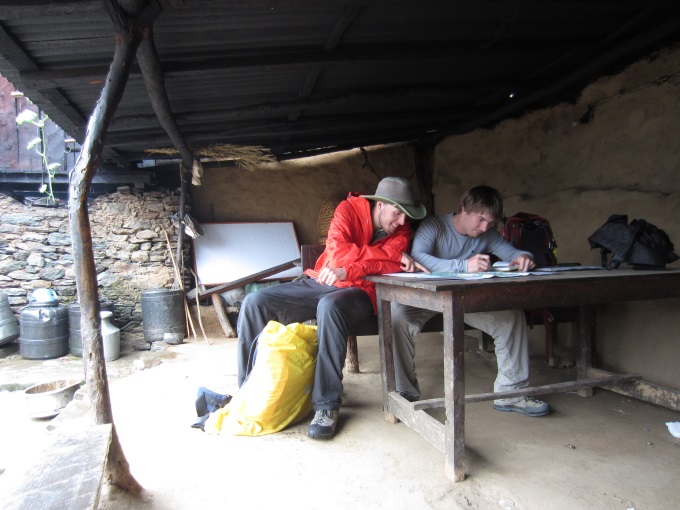Living through an earthquake
May 20, 2015
Share
Huddled in the doorway of a hotel in Kathmandu, two Queen’s geology students travelling through Nepal on a research trip survived a catastrophic earthquake that devastated the country on April 25. Over 8,000 people died and 2.8 million people were displaced.
Back early from a trekking trip in the Himalaya to gather rock samples, PhD student Renaud Soucy La Roche and BSc student Nigel Bocking were in an alley beside their hotel sorting rocks when the ground started shaking. They immediately knew it was an earthquake and their first instinct was to seek shelter.

“We were surrounded by high buildings on narrow streets so we knew we had to get to safety,” says Mr. Soucy La Roche. “We headed for the doorframe of the front door of the hotel and waited. It was a newer building so we thought we’d be safe.”
Once the major earthquake event had finished, Mr. Soucy La Roche and Mr. Bocking headed to an open space near the hotel where they spent the entire afternoon, along with a huge crowd of other people.
“There were aftershocks about every 10 minutes but we didn’t see a lot of damage from where we were,” says Mr. Soucy La Roche. “People were certainly panicking though.”
Once they felt a little safer, the two headed back to their hotel, settled down in the lobby and talked to other visitors about the quake. They both quickly realized how serious the situation was. Around midnight they went to their room and in the morning headed to the Canadian consulate to find out what emergency plans were in place. By the end of the day, the two were safe at the American Club.
Back in Kingston, the students’ professor Laurent Godin (Geological Sciences and Geological Engineering) woke up at 7 am on Saturday, April 25 to an alert from the U.S. Geological Survey saying a massive earthquake had hit Nepal.
“I saw the magnitude, and I went, ‘Oh, wow, this is serious’, and I knew Renaud and Nigel were en route to Kathmandu but I wasn’t quite sure where they were at the time,” says Dr. Godin.
He quickly made his way to Queen’s to talk with senior administration about the situation. At around 9 am he got an email from his students saying they were safe.
“It was a huge relief,” he says. “I encouraged them to stockpile water and stay away from tall buildings as there were still serious aftershocks.”
The research group’s travel agent managed to secure the two students a flight out of Nepal, and they flew back home to safety. Now the concern for the three is helping their friends living in the disaster zone. Dr. Godin has been conducting research in Nepal for 20 years and calls many Nepali people his family. He is in contact with them every day and is now raising money for them after their villages were destroyed during a second earthquake on May 12.
“For more than 20 years, the Queen’s Tectonics Research Group and its affiliates have relied on Nepali people to conduct research in the Himalaya,” says Dr. Godin. “Urgent support is now needed for all the survivors where the biggest issues are proper shelter, food, and reliable water supplies in the face of impeding monsoon rains that will start in June. They have no homes, no income and no insurance to start rebuilding. We need to help them now.”
To learn more about how to donate visit the website.